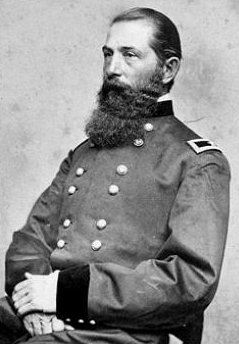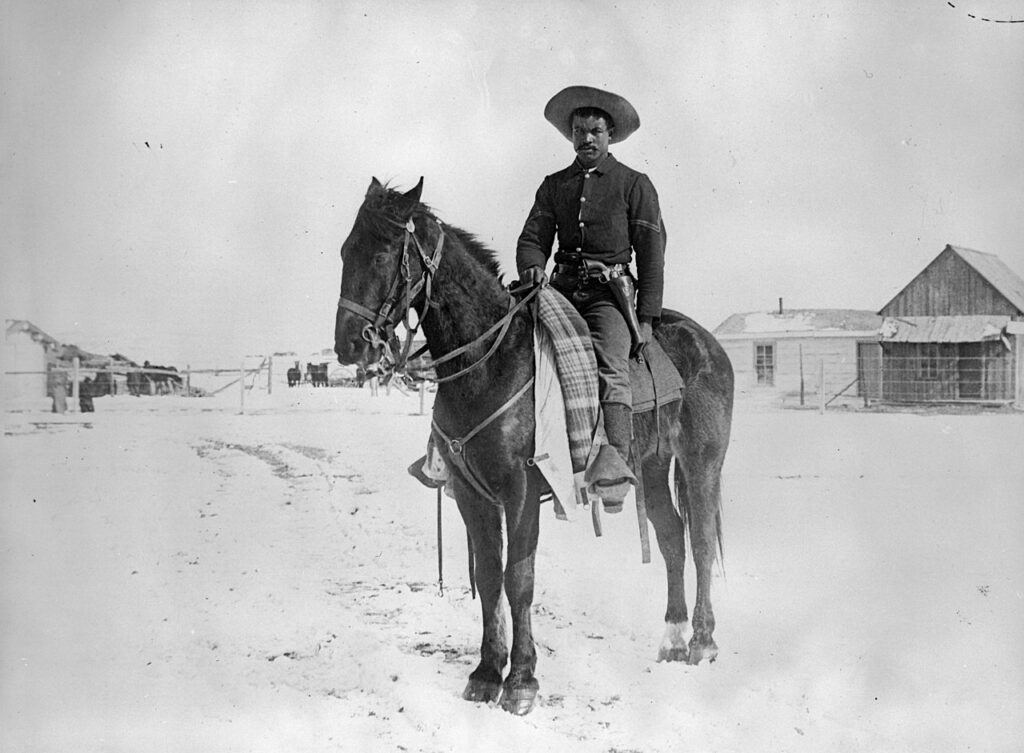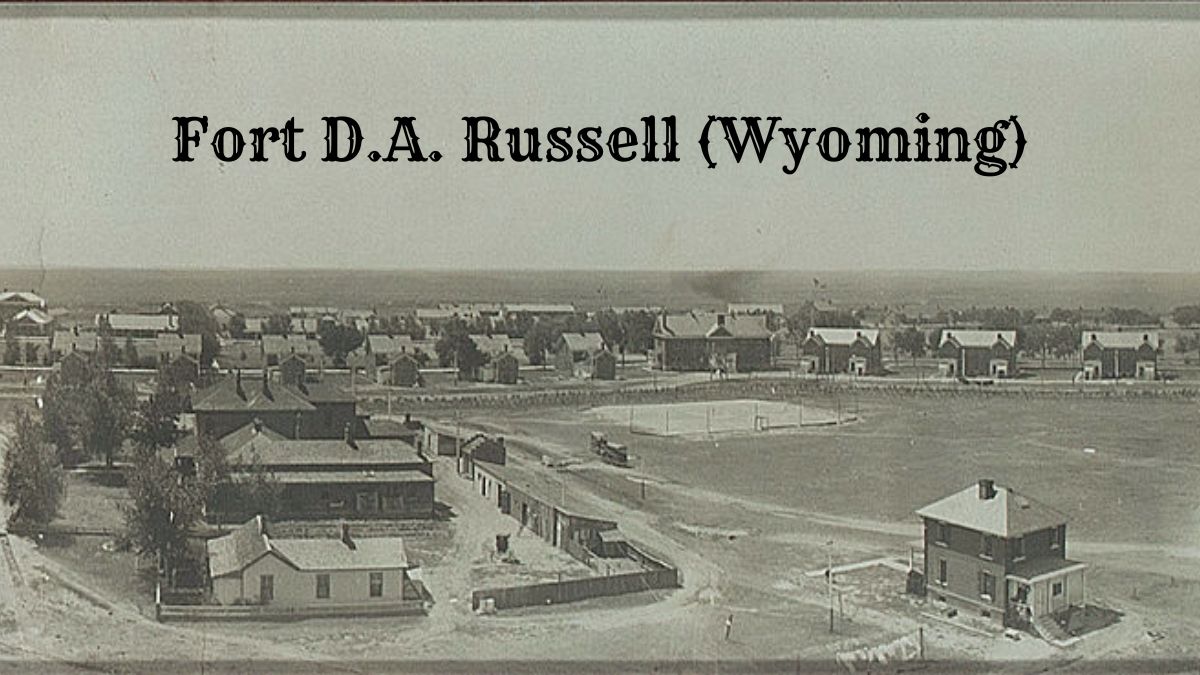Fort Bridger, Wyoming, is a site of profound historical significance in the American West.
Established in 1843 by Jim Bridger and Louis Vasquez, this fort began as a fur trading post and evolved into a crucial resupply point along the Oregon Trail.
Its strategic importance was further highlighted when it became a U.S. Army outpost in 1858 and was pivotal in various regional conflicts.
Today, Fort Bridger is a state historic site where visitors can explore preserved buildings and museum exhibits and engage in annual reenactments. This offers a glimpse into the Westward expansion’s rich history and cultural heritage.
History of Fort D.A. Russell Wyoming
Fort D.A. Russell played a pivotal role in U.S. military history from its founding in the mid-19th century through both World Wars, eventually transitioning into a modern Air Force base.
Origins and Naming

Dedicated in 1867, Fort D.A. Russell was named in honor of Civil War Brigadier General David A. Russell. It was established to protect the Union Pacific Railroad during the height of the Indian Wars.
The fort’s construction was a strategic move to ensure the safety and continuity of the nation’s first transcontinental railway system.
Military Engagements and Roles
Throughout its operation, the fort saw various military uses.
Initially home to infantry companies, the base expanded when cavalry units joined in the 1870s, leading to the construction of cavalry stables.
The troops stationed at Fort Russell engaged in multiple conflicts during the Indian Wars.
During World War I, the fort served as a training ground for soldiers and was expanded to accommodate many troops.
With the beginning of World War II, the base continued its role as a training and administrative center.
Transition to Francis E. Warren Air Force Base
1930 Fort D.A. Russell was renamed Fort Francis E. Warren after the Wyoming senator and Medal of Honor recipient.
The fort transitioned into F.E. Warren Air Force Base following the establishment of the United States Air Force in 1947, marking a significant shift in the base’s history.
The base continues to serve as an active military installation, emphasizing the longevity and evolution of the site’s military significance.
Military Architecture and Infrastructure

Fort D.A. Russell in Wyoming displays a historical military architecture that dates back to its establishment in the latter part of the 19th century.
The infrastructure has evolved significantly from its inception as a military post to becoming a permanent fixture with substantial facilities designed for defense and administration.
Building and Expansion
Fort D.A. Russell experienced an extensive building program to support its growth as a military installation.
The construction included red brick barracks, officers’ quarters, and additional support structures necessary for a fully operational military post.
- Permanent Post: Initially a temporary outpost, it evolved into a permanent installation.
- Expansion Efforts: The efforts included constructing supply depots and administrative buildings.
Historical Structures
Historical structures at Fort D.A. Russell consist of numerous red brick buildings that have withstood the test of time, serving as a physical record of the post’s military past.
- Officers’ Quarters: These were built with distinctive red brick, indicative of the era’s architectural style.
- Main Gate and Parade Grounds: The main gate provided secure access, while the parade grounds were a focal point for military ceremonies.
Cultural and Social Impact
This section explores Fort D.A. Russell’s role in American history, focusing especially on its cultural and social influence on black regiments and the surrounding local communities.
Buffalo Soldiers and Black Regiments

Fort D.A. Russell was significant for housing Buffalo Soldiers, a term for all-black regiments in the United States Army after the Civil War.
These troops served at the fort during various periods, exemplifying the perseverance of black soldiers in a racially segregated military.
Their presence contributed to a military legacy highlighting vital themes in American history.
Fort D.A. Russell also played a role in advancing African American military leaders.
As a historical site connected with the Buffalo Soldiers, the fort served as a ground where black regiments forged a path for future generations.
They demonstrated discipline and professionalism, leaving a lasting impact on the US military structure.
Influence on Local Communities
The fort’s presence was closely intertwined with the local Cheyenne residents and community members.
It provided economic stability and social interactions, shaping the community’s development.
Cheyenne Frontier Days, an annual event that started in the late 19th century, saw active participation from Fort D.A. Russell’s personnel.
This tradition helped to cement a shared cultural heritage and fostered a symbiotic relationship between the military and civic entities.
Soldiers from Fort D.A. Russell and local Native Americans occasionally interacted, leading to a complex exchange of cultural values.
Although these interactions were shaped by the larger context of American frontier history, they left an indelible mark on the region’s cultural tapestry.
Strategic Development and Military Evolution
The evolution of Fort D.A. Russell in Wyoming illustrates its historical strategic and military significance.
From its establishment to modern-day relevance, the fort has undergone numerous transformations reflecting its strategic importance.
Role in Military Campaigns
Fort D.A. Russell was a pivotal location for the United States Army during times of conflict with hostile Indians.
As a frontier infantry post, it provided a strategic base for troops safeguarding settlers and maintaining order in the western territories.
Situated in Wyoming, Fort D.A. Russell served as a temporary and semi-permanent headquarters for various military campaigns, benefiting from its vital position in the mountain region.
- Strategic Location: The fort’s proximity to the transcontinental railroad was crucial for troop deployments and logistics.
- Military Headquarters became a temporary headquarters, and the mountain region headquarters eventually coordinated military efforts in the surrounding areas.
Modern Military Relevance
In later years, Fort D.A. Russell transitioned to become one of the largest cavalry bases in the United States.
The fort’s infrastructure and facilities were expanded and improved, reflecting prevailing military requirements.
It has acted as a vital training facility for soldiers deployed to various locations, including the Middle East.
The involvement of a United States senator in this development underscores the importance of the fort to national defense.
- Training Facility: The fort was a key training ground for international deployment, focusing on preparing troops for varying climates and terrains.
- Leveraging Location: Its strategic placement continued to facilitate logistical and training operations, adapting to the evolving nature of modern warfare.
Explore More: 15 Historic Forts in Wyoming
Public Events and Education
Fort D.A. Russell in Wyoming offers a variety of educational and public events for history enthusiasts and community members.
These events provide a deeper look into military history through interactive experiences and educational opportunities.
Fort D.A. Russell Days
Each year, Fort D.A. Russell hosts Fort D.A. Russell Days, an open house event rich in history.
Visitors can expect historic military presentations that depict the fort’s pivotal role in past military activities.
Notable features include missile displays, which showcase an array of military firepower once part of the nation’s defense arsenal.
Community Engagement
The fort participates in community engagement by operating as a Quartermaster Training Center.
This serves as a resource for military personnel and provides civilians with insights into military logistics and supply.
The fort’s commitment to education is evident in these hands-on, knowledge-sharing opportunities, allowing for a greater public understanding of historical and contemporary military operations.
Notable Persons and Honors
This section recognizes individuals associated with Fort D.A. Russell who have received significant military honors and those who have played a prominent role in its history.
Medal of Honor Recipients
- David Allen Russell: Fort D.A. Russell was named in honor of Brigadier General David Allen Russell, who fought in the Civil War. He was later honored posthumously for his service and leadership.
- Jim McDonnell: Although details are limited, records indicate that a Medal of Honor recipient named Jim McDonnell was stationed at Fort D.A. Russell.
Prominent Military Leaders
- Billy Mitchell: As an advocate for air power, General Billy Mitchell’s presence at Fort D.A. Russell contributed to its transition to an active Air Force base.
- Walter Reed: This fort once connected with the renowned physician who made monumental contributions to understanding yellow fever and typhoid.
- Black Jack Pershing: Pershing, nicknamed “Black Jack,” served with distinction and was recognized as a skilled and proficient leader during his assignment at the fort.
- Gen. C.C. Augur: Having played a significant role in the fort’s early years, Augur’s contributions are a lasting part of its legacy.
- President Lincoln: While not a military leader in the traditional sense, President Lincoln signed the legislation that brought Fort D.A. Russell into existence, marking a pivotal moment in its history.

Cory is a website owner and content creator who enjoys fishing, history, coin collecting, and sports, among other hobbies. He is a husband and father of four.
Romans 15:4 For whatever was written in former days was written for our instruction, that through endurance and through the encouragement of the Scriptures we might have hope.

